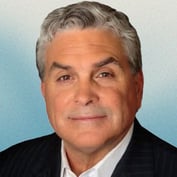Breakaway advisors launching their own RIAs want to run their own show. But first, they must decide what type of client they most want to attract.
“RIAs would grow more aggressively if they were to find a niche and figure out: This is the specific service we’re offering for this specific segment of the population,” argues Matt Sonnen, founder and CEO of PFI Advisors, which helps RIAs start their own firms and existing RIAs become more profitable.
Establishing a profile of their ideal client determines the services the RIA owner will offer, along with the right technology to deliver them, says Sonnen. Failing to pinpoint a niche can lead to onboarding clients whose needs the RIA cannot successfully fulfill.
Being a great financial advisor is one thing, but running your own firm is another, and RIA owners are “not always the best business owners,” maintains Sonnen, a 2022 ThinkAdvisor LUMINARIES award honoree for thought leadership and education.
Setting expectations tops the list of the ways in which Sonnen helps breakaways. As business owners, they’ll have much more on their plate than they envisioned. Outsourcing has limitations, he notes.
PFI offers some special services for RIAs, like courses to learn the ropes about running operations, The COO (chief operating officer) Society and the COO Roundtable podcast.
In the years right before PFI’s opening in 2015, Sonnen worked extensively with breakaway advisors as vice president of strategic operations at Focus Financial Partners. Sonnen’s resume also includes time at Merrill Lynch and then Luminous Capital, which, as COO and chief commercial officer, he helped grow to nearly $6 billion in assets in under five years.
Sonnen and his wife Larissa Marcontell Sonnen, PFI co-founder and COO, are notably philanthropic in supporting pediatric charities, such as the Layla Paige Foundation, which raises funding for terminally ill children. This focus was inspired by Sonnen’s late daughter, Layla.
ThinkAdvisor recently interviewed Sonnen, who was speaking from Los Angeles, where PFI is based. Here are highlights of our conversation:
THINKADVISOR: What’s a key growth strategy for RIAs?
MATT SONNEN: RIAs would grow more aggressively if they were to find a niche and figure out, “This is the specific service we’re offering for this specific segment of the population.”
There are countless examples showing that firms grow faster when they get more focused on who their ideal client is.
Do you talk about the importance of this with your advisor clients?
Yes. [For starters], an advisor’s ideal client determines what services they’ll be offering, and, based on the niche they’re serving, the technologies, processes and systems they need to serve those clients.
You can’t even consider what your tech stack is until you know who your ideal client is.
So even from a technology perspective, you need to start with knowing your client niche and how you’re going to serve it.
What can happen when RIAs don’t determine that?
They [lament], “We keep taking on the wrong type of clients. They have needs outside of what we specialize in.”
So they have to think [up front] about the type of client they want and the type of service offering they’re providing to those clients.
Also, buyers who have just acquired a firm get so focused on deal structure that they forget about matters like integration.
What issues along these lines can arise when one RIA acquires another?
There has been so much M&A activity in the last couple of years. Many of the advisors are just looking at the numbers and not thinking, how does this RIA’s client niche fit into ours?
They want more advisors, more clients. We say, “What type of advisors do you want more of? What type of clients do you want more of?”
Do advisors contact you before they leave a wirehouse?
Yes. They’ll say, “We want to start an RIA from scratch. How do we begin?”
We’ll work with breakaway clients several months ahead of their resignation, setting up things like real estate and payroll, and recommending marketing firms.
In what way do you help them the most?
Setting their expectations appropriately. We tell them that even though we can take as much off your plate as possible — introducing you to vendors [and so forth] — you’re still running the business, and the buck stops with you.












 Copyright © 2024 ALM Global, LLC. All Rights Reserved.
Copyright © 2024 ALM Global, LLC. All Rights Reserved.